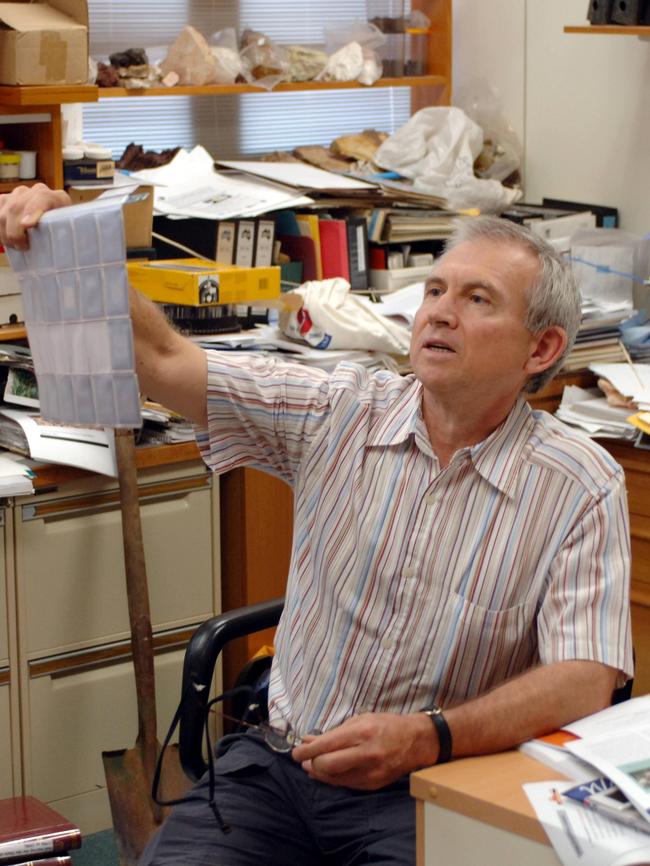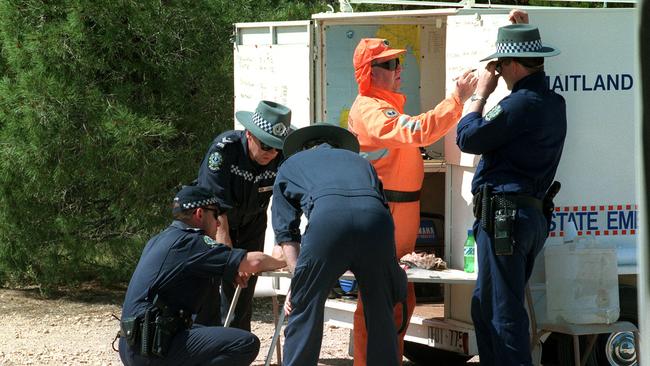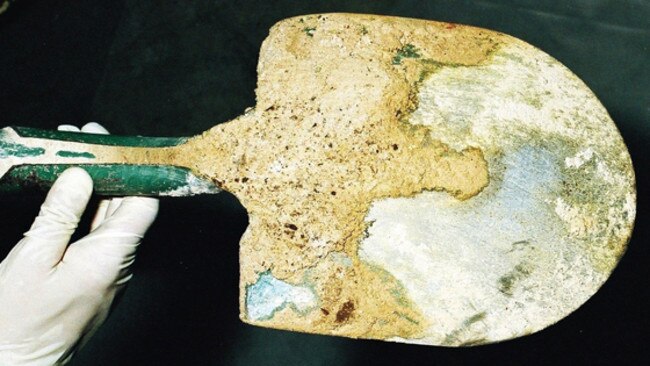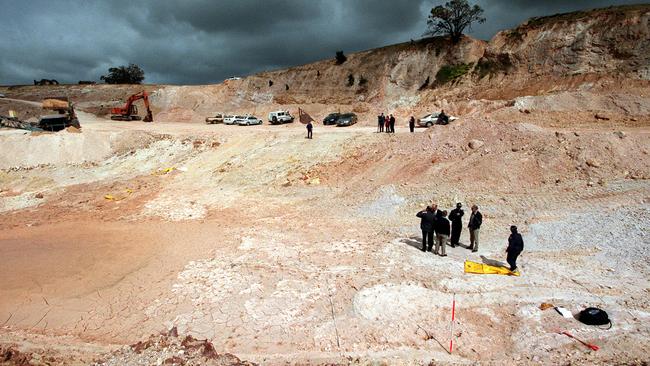How the CSIRO turned CSI and solved a double murder
IT was the double murder case that showed how soil science could help crack crime. Now the Australian scientists involved work investigations nationwide and have literally written the book for the FBI.

Behind the Scenes
Don't miss out on the headlines from Behind the Scenes. Followed categories will be added to My News.
DOUBLE murderer Matthew Holding thought he could escape prosecution by refusing to talk.
Little did he know the shovel police had found in his car boot was already talking, telling police through the expert eyes of two CSIRO soil scientists exactly where to search for the bodies of his mother and grandmother, which he had dumped in a shallow grave in a secret location.

Forensics: Why shooting death has experts stumped
Enduring mystery: Cold case unsolved, 70 years on
Police first spent three days fruitlessly searching areas in Moonta, South Australia, where they had arrested Holding by the side of the road, before turning to the experts to advise them on dirt found in his car.
The result not only sent Holding to jail for two murders but also allowed Professor Rob Fitzpatrick and his team to create the Centre for Australian Forensic Soil Science which has so far worked on more than 120 criminal and environmental forensic investigations.

“When this case came up in Adelaide there were no soil people in the forensics labs that could do this work,” Professor Fitzpatrick said today, explaining earlier attempts by forensic workers without a background in soil science to use soil samples had been curtailed because of court challenges to their expertise.
Now the CAFSS works on cases across the country, is making use of the latest synchrotron technology to extract evidence from smaller and smaller samples, and Prof Fitzpatrick has written a manual on the science that is used by the FBI and around the world.
“In the past our cases would come from the police, but now we also have the prosecution coming to us asking for work to be done,” Professor Fitzpatrick said.
Over the years, CAFSS has worked on cold cases, murders and sexual assaults, including high-profile crimes such as the murders of Janine Balding in NSW and Carly Ryan in South Australia.
“The strength of soil forensic evidence is becoming increasingly well accepted,” wrote Professor Fitzpatrick and his CAFSS colleagues, Mark Raven and Peter Self, in a 2017 paper on those cases and others for the Episodes Journal of International Geoscience.
“In fact, five cases in Australia have been conducted where the suspect has decided to admit guilt without forensic work actually being carried out. Detectives have simply told suspects or their legal teams that soil samples have been or will be collected for investigation and comparison by forensic soil scientists.”
The Holding case was the start of it all, both convincing the CSIRO that it should do more of such work and fuelling demand from the forensic fraternity.
Back in 2000, the shovel in Holding’s car boot conformed to what scientists call the Locard Exchange Principle, which states that when two things come into contact they exchange trace evidence.
The shovel as well as a green jade bracelet and boots had retained a pinkish powdery soil, possibly the scientists deduced from a place where Holding had buried the bodies.

To any layperson except perhaps the expert gardener, soils may appear similar.
But soils can be highly individualistic in that there is an almost infinite number of different soil types because of factors like parent material, climate, soil organisms, and the interaction between all of them.
Holding’s soil samples on the shovel were identified as coming from deep sub-soil layers, and that it had been wet when transferred on to the shovel.
The soil scientists combined this knowledge with factors such as the soil’s mineralogical composition, acidity, electrical conductivity and salinity.
Many of these features were consistent with deep mining activity or quarrying, and were so called “man-made soils’’ because of their mixture.

Comparing the sample to a soil map of areas, which had that soil profile quickly ruled out the Yorke Peninsula where Holding had been arrested because of its alkaline and salty soils due to a low rainfall.
The Adelaide Hills was considered more likely because it had the level of acidity and salt, which matched the sample.
A small group of industrial gravel and soil quarries near Oakbank were considered to be the best match. Armed with this information police quizzed Holding’s family and friends and learned of one particular quarry in the area he was known to have visited as a potential location to dispose of disused car tyres.
Subsequent police searches for recent disturbances, including with a sniffer dog, proved fruitless but Professor Fitzpatrick and his colleagues remained adamant that the soil samples matched.
They took two soil samples from a wet area of the quarry and matched properties with the Holding samples.

They found a 10-out-of-10 strike rate. Remarkably, they had predicted within 15 metres the location of the bodies.
“Some three weeks after the murder, the bodies of the women were found in the wet area of the quarry 15m from where the control samples were collected when one of the bodies was uncovered by foxes,’’ Professor Fitzpatrick explained in a 2012 paper on the case, published with the CSIRO’s Mark Raven. “One day later, foxes uncovered the other body.”
In the Supreme Court, Matthew Benjamin Holding, then 23, pleaded guilty to murdering his mother, Ying Holding, 49, and Chun Mi Ng, 68, in their Oakbank home in September 2000.
Professor Fitzpatrick said he published details of how the team cracked the case to try and encourage young people to look at soil science as an exciting career.
“These days we need to work harder to attract students to study soil science because they have a somewhat dry and dusty, or a muddy and smelly, image of soil science, especially of pedology, but this stereotype can be far from reality,’’ he said.
“Forensics in general is attractive to students.
“Just look at the popular television shows CSI, X-Files, and numerous others. There has also been an emergence of university courses geared toward producing forensic scientists.”
• This is an updated version of a feature by Miles Kemp first published by The Advertiser in 2012.
Originally published as How the CSIRO turned CSI and solved a double murder


